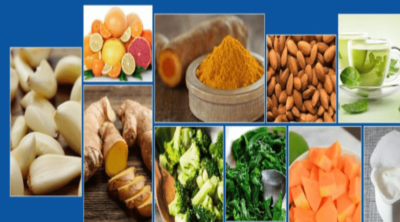
What is Canadian bacon? How many calories are in Canadian bacon? Find answers to these questions, and more, in this article. Canadian bacon contains less fat than the traditional American bacon. Scroll down to know the nutrition facts of Canadian bacon…
Cured pork is commonly recognized as bacon. The fat content and calories in bacon vary, depending upon the type of cut used to prepare the bacon. For example, the side cut is high in meat and low in fat than the belly cut. Bacon can be made from pork belly which is quite fatty. Traditional American way of enjoying bacon involves, eating bacon strips made from the belly portion, while in Canada bacon is often made from pork loin which is very lean. Canadian bacon is also known as back bacon. Let us first take a look at some popular types of bacon.
Types of Bacon
American Style Bacon: Initially, pork belly is cured in a brine for at least three days. The brine consists sugar, salt, pepper and various other spices. Then the pork is cold smoked. Bacon is made available in the form of juicy strips, slices, etc. The strips can be 0.031 to 0.111″ thick.
Irish bacon: It is also a smoke-cured bacon. It looks like a boneless pork loin roast. Irish bacon is prepared from the lean meat derived from the ‘eye part’ from a piece of pork loin. You can slice it to any desired thickness.
Canadian bacon: It is made from the pork loin. It is low in fat and calories when compared to American-style bacon.
Apart from these popular types, there exist several other types of bacon like Italian-style bacon (Pancetta), slab bacon, boiling bacon, etc. Cooking in a oven or microwave or deep frying are the popular ways of preparing bacon.
Canadian Bacon Nutrition Facts
6 oz or 170 g of Canadian-style bacon (unheated)
| Nutrient | Quantity |
| Calories | 267 |
| Calories from fat | 107 |
| Calories from protein | 150 |
| Calories from carbohydrates | 10.2 |
| Total carbohydrate | 2.9 g |
| Saturated fat | 3.8 g |
| Monounsaturated fat | 5.4 g |
| Polyunsaturated fat | 1.1 g |
| Total fat | 11.9 g |
| Cholesterol | 85.0 mg |
| Sodium | 2395 mg |
| Protein | 35.1 g |
| Riboflavin | 0.3 mg |
| Vitamin B6 | 0.7 mg |
| Vitamin E | 0.4 mg |
| Vitamin B12 | 1.1 mcg |
| Niacin | 10.6 mg |
| Folate | 6.8 mcg |
| Copper | 0.1 mg |
| Betaine | 3.2 mg |
| Thiamin | 1.3 mg |
| Pantothenic acid | 0.9 mg |
| Calcium | 13.6 mg |
| Iron | 1.2 mg |
| Magnesium | 28.9 mg |
| Phosphorus | 413 mg |
| Potassium | 585 mg |
| Zinc | 2.4 mg |
| Manganese | 0.0 mg |
| Selenium | 42.5 mcg |
| Omega 3 fatty acids | 153 mg |
| Omega 6 fatty acids | 918 mg |
| Water | 114 g |
| Dietary Fiber | 0.0 g |
| Choline | 117 mg |
| Sugars | 0.0 g |
The table shows that Canadian bacon is high in protein and various vitamins and minerals, but it is also high in cholesterol and sodium. So limited use of bacon is recommended. Calories in bacon may vary according to the thickness and weight of the piece and also according to the type of bacon.
Calories in Canadian Bacon
- One slice of cured Canadian bacon contains 43 calories.
- One ounce of cooked Canadian bacon contains 52 calories.
- One oz of raw (yield after cooking) Canadian bacon contains 43 calories.
- One cubic inch of cooked Canadian bacon contains 33 calories.
- 100 g of Canadian bacon contains 185 calories.
- 3 slices (53 g) of Oscar Mayer Canadian bacon contains 60 calories.
- 1 serving (56 g) of Canadian bacon by Hormel offers 68 calories.
I hope the information on the nutrients and calories in Canadian bacon helped you decide the portion. Bacon is one of the most popular food items in the world, but some studies show that sodium nitrite, a chemical colorant present in processed bacon increases the risk of developing pancreatic cancer by at least 67%. Sodium nitrate can cause cerebral tumors, leukemia or vesica cancer. Consumption of bacon in moderation is therefore recommended by doctors and dietitians.

